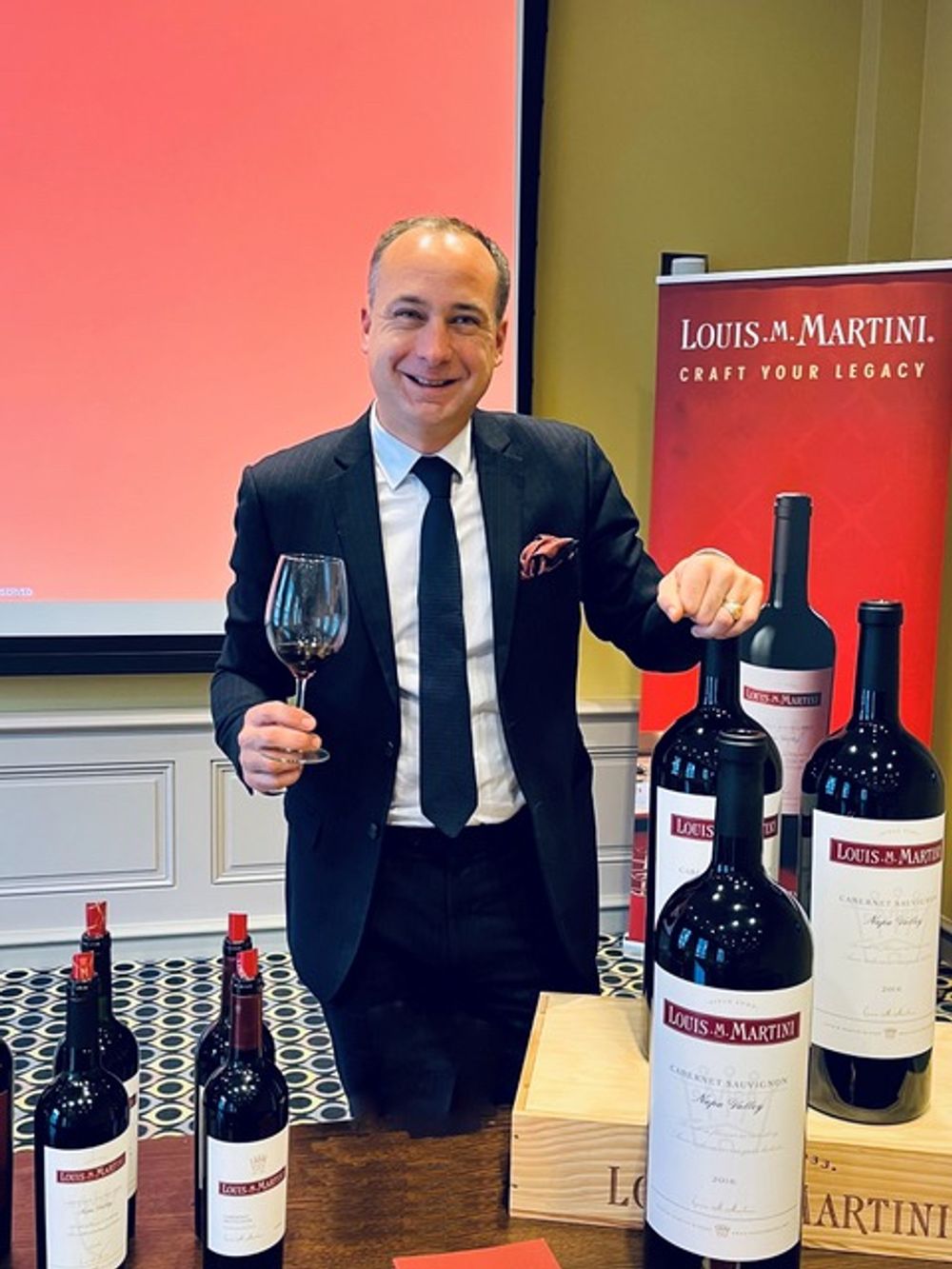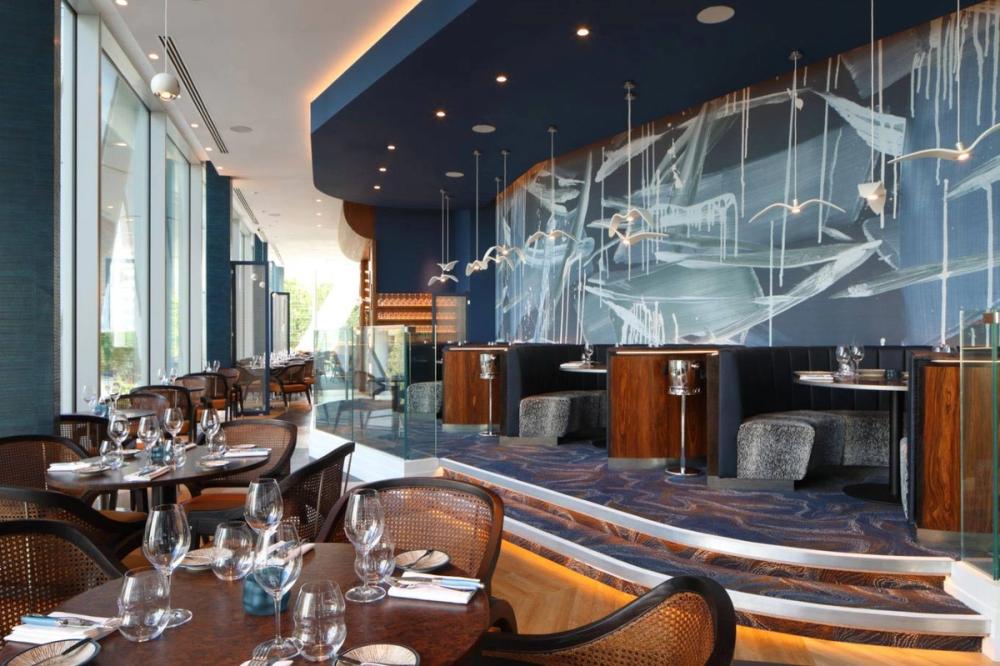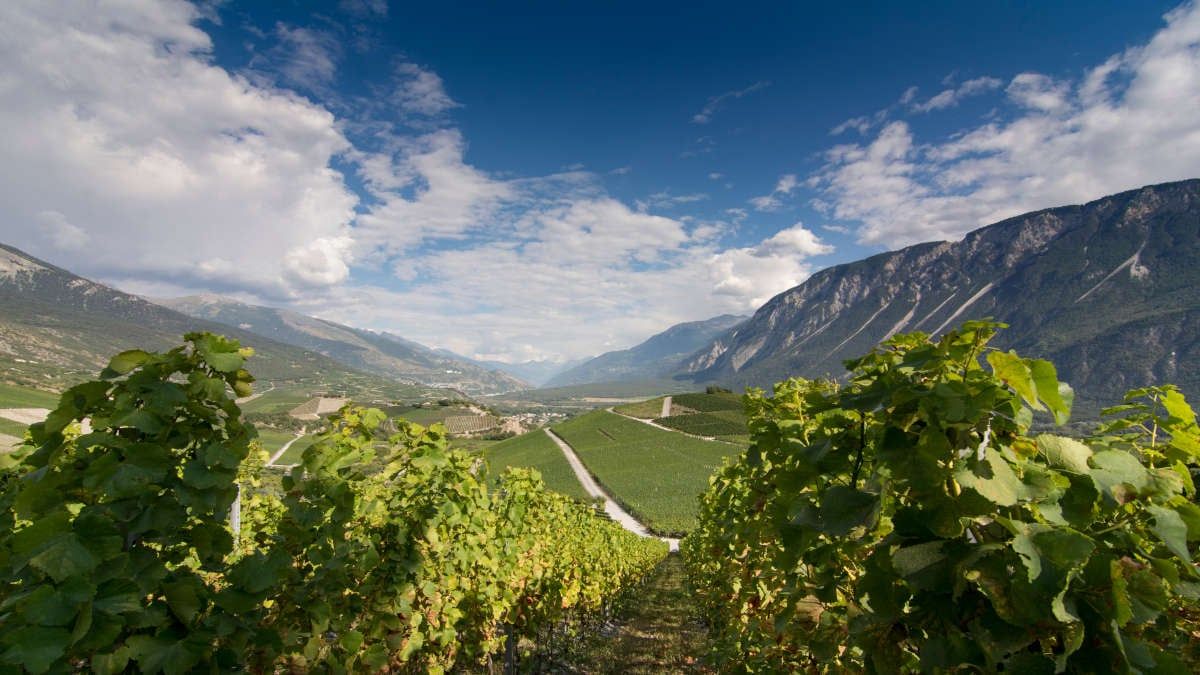Edouard Baijot MW explains how he hopes to be able to position E&J Gallo’s premium portfolio in the luxury sector.
Congratulations on the promotion to director luxury international at E&J Gallo – can you describe your aims for the role and why the luxury category is so important to E&J Gallo?
Our mission is to inspire wine lovers with our luxury portfolio, taking them on a journey of exploration across the premium AVAs of California and encouraging them to discover some the region’s finest wines.

Edouard Baijot MW has taken on the new luxury director international role
Over the past 20 years, our portfolio has gone from strength to strength with the acquisition of Louis M. Martini in 2002, which boasts some of the most coveted plots in Napa and Sonoma including the world-famous Monte Rosso vineyard, Dave Phinney’s iconic Orin Swift whose wine each tell a story that’s reflected in its label, and, through the most recent purchase, Denner Vineyards in Paso Robles which has cultivated an exceptional portfolio inspired by the styles of the Rhône and Bordeaux.
Can you give us your perspective on the luxury wine sector and what are the key dynamics driving it forward?
Demand for fine wines has never been greater, and according to the Gérard Basset Global Fine Wine Report 2022 from Liquid Icons, this is a trend that is echoed across the world, largely driven by the overall strength and quality of the fine wines segment, growing levels of investment into fine wine and an unprecedented level of interest in fine wines created by a new generation of fine wine makers who are using new practices.
Consumers are also increasingly becoming more knowledgeable about fine wines and want to explore more, focusing their attention on quality and unique experiences. Diversity and discovery of new regions is key even if the demand for traditional premium regions remains strong.
What do you see as the consumer trends and changes in behaviour that are impacting on super premium and luxury wine sales?
Today’s consumers care about what is in their glass. Having an attractive label stating Grand Cru Classé or Napa Valley isn’t enough anymore, they want to know the story of the wine and the craft behind it. They want to experience something unique.
Sustainability has become increasingly important to consumers and as a business, this is an area to which we are deeply committed. Respect for the land, respect for one another, respect for the communities where we operate, always seeking to improve. We consider this our legacy to future generations and look to work with partners who share our vision. Denner Vineyard’s outlook on sustainability chimes with E&J Gallo’s green approach.
Are consumers interested in styles of premium wine, regions, countries, or a combination of factors?
There’s no doubt that all of these factors contribute to this growing interest and demand. Style remains important because it will determine whether you like the wine or not, but again having deep understanding of the origin, the characteristics of the vineyards, and the winemaking which determine the final style are also very important.
Of course, not all consumers are the same so it is important to consider what phase of the luxury journey they are on. We can split them down into a few categories:
- True Luxury consumers tend to stay loyal to a few selected brands and really embrace brand stories. Whilst they love wine and enjoy it frequently, they are not really educated about it.
- Aspirational Consumers are inspired by what they see and read in lifestyle magazines and follow luxury buyer or celebrity trends.
- Knowledgeable and Influential, wine collectors are guided by wine critics; they are driven by scores and are looking for wines that are not widely available.
- Wine Geeks, who like to explore different regions and styles; they tend to purchase non-luxury wines, occasionally splurging on something special. It is important for us to be engaging with all these groups.
How does the luxury wine category compare and contrast with other luxury goods?

The iconic Orin Swift range
Luxury wine and luxury goods share many of the same attributes – excellence, exclusivity, heritage – and spark similar emotions – aspiration, unique experience, sense of privilege and of course, pleasure. But for me, there are two main differences:
Firstly, the luxury wine category is more fragmented with greater diversity than other luxury goods such as fashion, or spirits even, where there aren’t as many players. It’s this diversity that makes the category so exciting. Many luxury wine producers are still family-owned, relatively small structures while other luxury goods companies are owned by international corporations.
Secondly, wine also always brings with it a sense of provenance that other luxury goods, which tend to rely on craft and expertise, don’t have. Not only is wine an agricultural product with a very important role for the places where it comes from, be it social, economic or environmental, where it is made is what defines it: a Napa Valley Cabernet Sauvignon for example, can only be produced in Napa.
What do you think wine can learn most from the luxury sector and implement?
Wine communications can still be quite traditional, while the luxury sector tends to be more creative, emotive and engaging. Luxury goods campaigns often ooze glamour and sophistication, creating a real sense of aspiration amongst a broad audience. The wine industry is still very much a craft industry and many wineries are yet to understand the purpose and importance of marketing, seeing it as an expense, rather than an investment. However, creativity needn’t always come at a cost
What do you think wine can offer the luxury sector and how is it leading the way?
There is nothing more memorable for a consumer than visiting an estate or domaine, where the winemakers’, often third or fourth generation, passion for the land and the craft is palpable. Several of our luxury wineries have their own wine rooms and award-winning restaurants.

The entrance to the newly revenated Louis M Martini winery
For example, in 2019, Louis M. Martini reopened its historic winery which has been passionately restored to preserve Louis M. Martini’s rich history in Napa Valley and continue the winery’s legacy in crafting world-class Cabernet Sauvignon. It is home to some spectacular tasting rooms, libraries and tasting cellars, each offering a truly unique wine tourism experience that really resonates with consumers. The Tasting Room features 30-foot-high glass walls and views in to the new barrel cellar. The design showcases reclaimed materials, including the winery’s original terracotta wall tiles, juxtaposed against contemporary materials. Where better to sample some of Louis M. Martini’s award-winning wines than where they are crafted?
What are they key trends for Californian luxury wine sales – regions, styles, price points?
Demand for Napa Valley Cabernet Sauvignon remains high and represents the biggest interest for luxury wine collectors, while sommeliers are increasingly drawn to emerging regions such St Rita Hills, Paso Robles or Santa Lucia Highlands, and wines from high altitude vineyards or cool climates sites where “balance and freshness” have replaced “body and flavours”.
And while demand for the most expensive wines from California remains high on bottles over $200, there is a growing interest in wines that hit the “affordable luxury” mark, usually priced $50-$100, where the diversity from California is really attractive.
This is where brands like Orin Swift and Louis M. Martini have come into their own.
What key developments have you made in 2022?
Luxury has only been a recent development for us so one of the most important things has been to direct people to a luxury mindset. The second priority has been to build a dedicated team that combines business acumen, wine knowledge and an affinity for luxury. We’re focusing our efforts on some of the world’s best-known luxury hot-spots such London, Dubai and Zurich where we can really get to know our target audience, find out what makes them tick and encourage them to engage with some of the incredible wines within our portfolio.

E&J Gallo is working with a number of restaurants that it sees as fitting the luxury image – like here at M Restaurant’s new site at Canary Wharf
We have also increased our presence in the on-trade and have forged partnerships with several Michelin-starred restaurants including Pollen Street Social, Le Gavroche and Lympstone Manor. In London, our wines can be found on the wines lists of prestigious establishments such as Berners Tavern at The Edition, Le Pont de la Tour and M Restaurants.
What do you have planned in 2023?
We’re delighted to be launching The Language of Yes, in partnership with the inspirational Randall Grahm in the New Year. We’ll be introducing two wines, a Grenache and a Syrah from the Rancho Réal vineyard in Santa Maria Valley AVA, with Hallgarten, a new partner for us in the UK who will be focusing on our Central Coast brands (Talbott Sleepy Hollow and The Language of Yes).
We’ll be developing our presence in key luxury markets around the world and extend our focus to new cities such as Stockholm, Montreal, and Seoul, sharing our story, our experience and our wines with as many wine enthusiasts as we can.
Anything else to say?
I am really excited about the future and E&J Gallo’s commitment to building a world-class luxury wines and spirits portfolio – the acquisition of Denner is a real coup. Watch this space.
- E&J Gallo is a partner supplier to The Buyer.


































